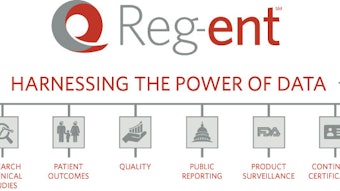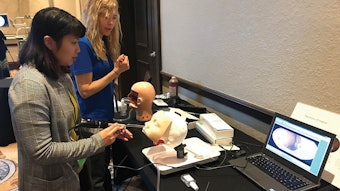Five questions to ask your administrator
You have established your practice’s leadership team—physician and administrator. The administrator has the knowledge and skillset to manage the business side of things so that you can focus on what you do best: treating patients.
You have established your practice’s leadership team—physician and administrator. The administrator has the knowledge and skillset to manage the business side of things so that you can focus on what you do best: treating patients. The Administrator Support Community for ENT (ASCENT) outlines five things you should be asking your administrator/manager on a regular basis to stay in the loop on the business side of your practice without sacrificing time with your patients.
1. What is our no-show rate? No-show rates can range anywhere from five to 30 percent. If you have 400 patient appointments in a month and 100 are no shows, that is a 25 percent no-show rate. Using a reimbursement rate of $200 per visit, this results in lost revenue of at least $20,000 per month. Multiply that over a year, and you have lost more than $240,000 in potential revenue.

Why do patients no-show for appointments? The four major reasons are:
- They forgot about their appointment.
- They couldn’t connect with the office via phone or computer to change or cancel their appointment.
- They had a conflict with their work obligations.
- They didn’t have the money for the appointment.
So how do you decrease no-shows? Having an appointment reminder system is important and will save you money in the long run. Ensure patient calls are answered and that the office is accessible. If the phone is ringing, any available staff should answer it and be knowledgeable enough to assist the caller or know where to direct the call. Increase staff awareness by making this a weekly report to the staff. This will help everyone work toward the goal of decreasing no-show rates. Finally, some practices are recouping no-shows by getting innovative with telehealth: Physicians can use an empty time slot to see patients virtually who have symptoms that are appropriate to diagnose remotely.
ASCENT, formerly the Association of Otolaryngology Administrators (AOA), is a support community and resource network for ENT practice management leaders. The community consists of invaluable resources, education, and people to enhance the quality and sustainability of the ENT practice. Representing more than 1,000 professionals across the country, ASCENT enables ENT leaders to advance their practices in the business of medicine. Learn more about our new look at www.askASCENT.org/OurStory.
2. How much does a patient visit bring to the practice in terms of average gross revenue? To find the average gross revenue for each patient visit, calculate the total office reimbursement over a particular time period and divide it by the number of patient encounters. If that number decreased over time, then pay attention to the payer mix.
3. How much do we lose on average by having an open appointment slot? This amount is more than the amount of reimbursement. You must figure in how many patients are seen in an hour and then divide all costs involved in that patient encounter. Costs include all salaries of the people involved in patient care. One idea to bring in additional revenue and avoid lost time is to implement a software solution that allows you to open a slot where patients can book a last-minute appointment.
4. What is the most recent office date that we have charges entered for all practitioners? This is important. This question could signify that providers are not completing their encounters in a timely fashion. It could also indicate a lag in the billing office. If you are not within a timeframe of zero to three days for charge entry, the administrator needs to be able to identify the issues involved in this lag time. Not getting the charges in to the insurance company in a timely manner could result in lag time with cash flow or accounts receivable.
5. What is the ratio of new to established patients? If the ratio is one new patient to every five returning patients, it is showing a considerably better influx of new patients than if the ratio is one new patient for every 25 return patients. That ratio might be telling you that you are relying too heavily on your return clientele and not enough on bringing in new patients. If this is the case, it might be wise to increase marketing efforts or evaluate scheduling templates and open additional visit slots for new patient appointments.
Look for our future articles on questions to ask your practice administrator/manager. If they are not members of ASCENT, check us out and join today at www.askASCENT.org. You, your practice, and your administrator will be glad you did.




















